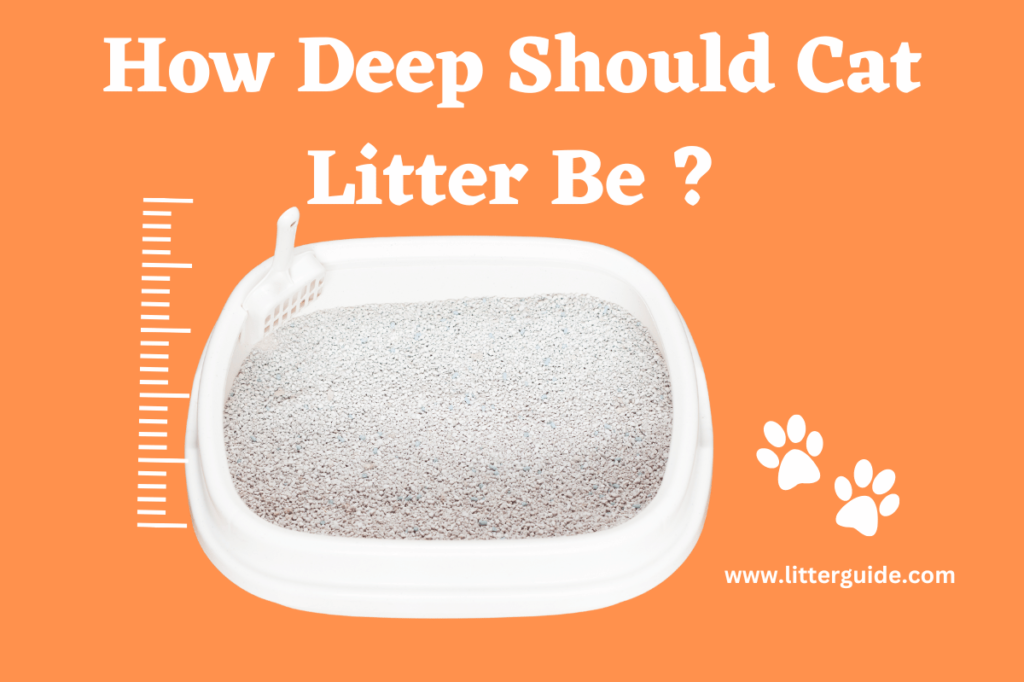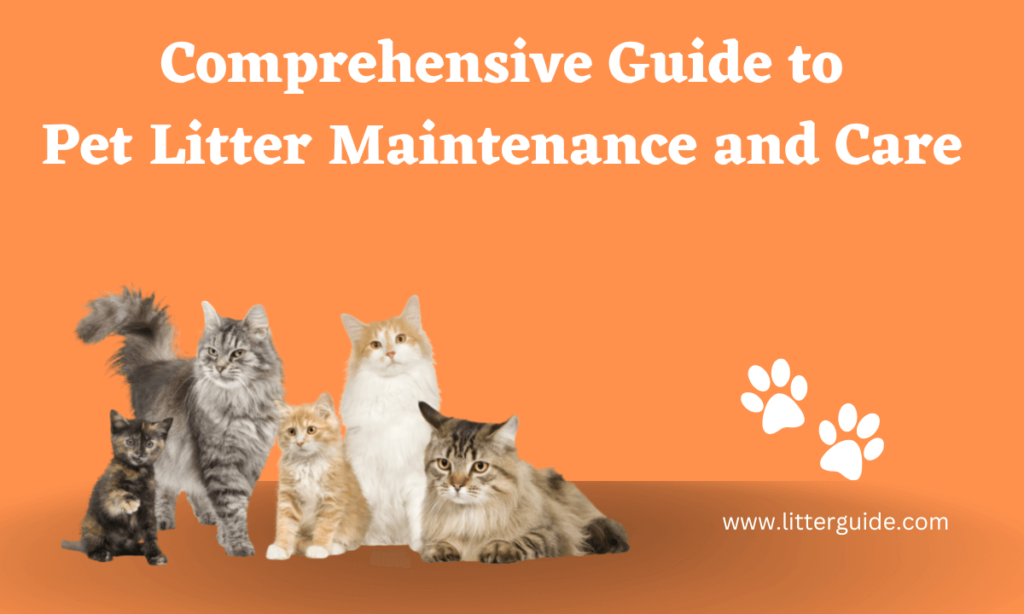Introduction
As a cat owner, keeping your Cat healthy and comfortable is essential. One important aspect of that is maintaining the right depth of cat litter in their litter box. Not only does the right depth ensure your cat’s hygiene and well-being, but it also helps keep your home clean and odor-free. But how do you determine the appropriate depth of cat litter? In this blog post, we’ll discuss everything you need to know about the depth of cat litter, including how it affects your cat’s health and behavior, the consequences of incorrect depth, and how to maintain the right depth.
Types of Cat Litter
Before we dive into the specifics of cat litter depth, let’s first discuss the different types of cat litter available. Some popular types include clumping, non-clumping, silica gel crystals, and natural options such as wood chips or wheat. Each type of litter can affect the depth requirement. For example, clumping litter can form a hard mass when wet, while silica gel crystals absorb moisture and don’t clump. Consider your cat’s preferences and habits when choosing the type of litter, as this can affect the depth of the litter box needed.
How Deep Should Cat Litter Be?
The general rule of thumb is that the depth of cat litter should be around 2-3 inches. This depth is enough to allow your cat to dig and bury their waste comfortably. However, the depth can vary depending on your cat’s size and habits. A larger cat may require a deeper litter box, while a smaller cat may be comfortable with less depth. As a general rule, the litter box should be around 1.5 times the length of your cat. It’s also important to note that if the litter is too shallow, your cat may not be able to bury their waste properly, which can lead to hygiene issues and an unpleasant smell.
How to Measure Cat Litter Depth?
Measuring the depth of your cat litter is essential to ensure the right depth. One way to measure it is to use a ruler or tape measure. Simply place the measuring tool on the bottom of the litter box and measure up to the surface of the litter. Alternatively, you can use a scoop or other tool to level the litter and measure from the bottom to the top. Always make sure to measure in different areas of the box to ensure an even depth. It’s also essential to monitor the depth regularly to ensure that it’s still at the appropriate level.
Consequences of Shallow Cat Litter
If the cat litter is too shallow, it can cause health issues for your cat. Shallow litter can cause your cat’s waste to sit on the bottom of the box, which can lead to bacterial growth and the spread of germs. Additionally, shallow litter may cause your cat to avoid using the litter box altogether, leading to accidents around your home. That’s why it’s essential to maintain the right depth to keep your cat healthy and hygienic. Here are 5 most common Consequences of Shallow Cat Litter
Unpleasant Odors:
If the litter is too shallow, your cat’s waste may not be fully absorbed, leading to strong and unpleasant odors that can linger in your home.
Poor Hygiene:
A shallow litter box can make it difficult for your cat to maintain proper hygiene. Cats need enough litter to be able to cover their waste, and without enough depth, they may track feces and urine onto their fur, which can lead to skin irritation and other health problems.
Increased Litter Box Cleaning:
A shallow litter box can also mean that you need to clean the litter box more often, as waste may not be absorbed properly and can accumulate more quickly.
Litter Tracking:
When the litter is too shallow, your cat may kick it out of the box when burying their waste, causing litter to be scattered all around the area, which can be messy and difficult to clean.
Cat Discomfort:
A shallow litter box can be uncomfortable for your cat to use, as they may not have enough room to dig and bury their waste. This can cause stress and discomfort, leading to behavioral issues like refusing to use the litter box.
To avoid these issues, it’s essential to ensure that your cat litter depth is at least 2-3 inches. If you notice that your cat is having trouble covering their waste or if there is an unpleasant odor, it’s time to add more litter to the box.
Consequences of Deep Cat Litter
While shallow litter can be harmful to your cat’s health, too much depth can also cause problems. Deep litter can make it difficult for your cat to dig and bury their waste, leading to hygiene issues and unpleasant smells. Additionally, deep litter can be difficult to clean, leading to the buildup of bacteria and unpleasant odors. That’s why it’s crucial to maintain the right depth of cat litter, so your cat is comfortable and healthy, and your home stays clean. Now we will discuss the five potential consequences of using deep cat litter.
Difficult for Cats to Move Around:
If the litter is too deep, it can be difficult for cats to move around and find a comfortable position to go to the bathroom, which may lead to them avoiding the litter box altogether.
Higher Risk of Litter Box Accidents:
When the litter is too deep, cats may have difficulty digging and covering their waste, leading to accidents outside the litter box.
Increased Litter Usage:
A deep litter box may require more litter to fill, leading to increased litter usage and cost.
Difficult to Clean:
Deep litter boxes can be difficult to clean, as scooping the litter can be more challenging, leading to the accumulation of waste and unpleasant odors.
Risk of Infection:
A deep litter box can increase the risk of bacterial infections, as bacteria can thrive in a moist and deep litter bed. This can lead to health problems for your cat and can even be transmitted to humans.
Conclusion
Maintaining the appropriate depth of cat litter in your cat’s litter box is crucial for their hygiene, health, and overall well-being. The general rule of thumb is to keep the depth at around 2-3 inches, although this may vary depending on your cat’s size and habits. Shallow cat litter can cause bacterial growth, unpleasant odors, and hygiene issues, while deep cat litter can be uncomfortable for cats to move around and lead to litter box accidents, increased litter usage, and difficulty in cleaning. It’s essential to monitor the depth of the cat litter regularly and add more litter as needed to ensure that your cat is comfortable, healthy, and your home stays clean and odor-free.



